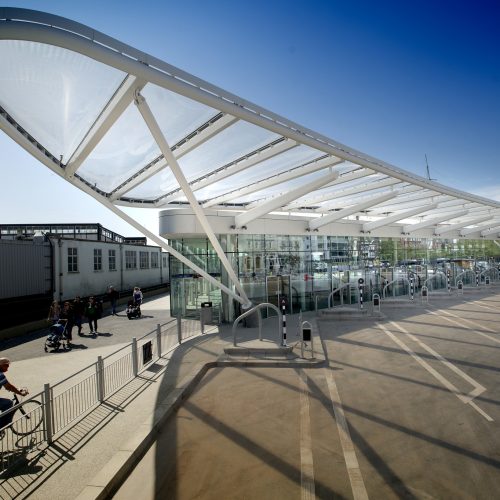
Scope: Construction
Octavius was appointed to build a new £9m transport hub to improve access to historic attractions. The Portsmouth hard interchange is a multi-modal transport redevelopment, part of the £1.8bn investment to improve the infrastructure and transport links into the city of Portsmouth. It forms a new high-quality gateway and transport hub in one of the busiest parts of the city of Portsmouth. The interchange connects pedestrians, cyclists, the adjacent railway station and harbour services.
As well as the regeneration of an historic area it provides improved transport safety for the over 13 million people a year who visit and completes the southern end of the new Portsmouth ‘park and ride’ scheme.
Project achievements and benefits
Gunwharf Quays and the Historic Dockyard collectively attract 6.5 million visitors each year and a significant number arrive by public transport. The new hub provides a modern gateway to those attractions and for many is an impressive first point of contact to the city.
One of the main safety challenges of the previous transport interchange was the lack of segregation between buses and passengers. The new facility incorporates a 10-bus bay drive in and reverse out (DIRO) forecourt which fully segregates pedestrians.
The bus bay doors open via induction loop under each bay and passengers can only enter when a vehicle has arrived. Hence an increased bus capacity has been achieved without compromising safety.
Sustainable construction
With sustainability embedded throughout design the project incorporates the re-use of an existing deck through the use of lightweight fill materials and the roof incorporates a lightweight plastic inflatable roofing system. A constant vacuum provides air to the ‘pillows’, protecting passengers from the weather. The sustainable drainage system includes a system that filters out any oil or contaminants before discharge.
The use of Building Information Modelling (BIM) meant we were able to retain much of the existing structure with over 100 individual repairs monitored throughout every stage and work was approved from remote locations reducing travel required to site and improving efficiency.
The innovative ceiling solution in the main terminal building comprises stretched fabric which aims to magnify the curved shape of the two internal pod units, hide services above and incorporate LED strip to sustainably illuminate the parabolic shape and overall space..
Every effort was made to limit the impact on the surrounding waterside environment during construction, where all previous 1970s elements that could not be retained re-used via local waste management.
The main terminal has glass cladding, minimising heating requirements through the benefit of solar gain. Care for marine environment included Marine Management Organisation licensing consent.
We collaborate with our customers, integrate our suppliers and develop our people to deliver assured, sustainable and efficient transport outcomes.
Site Map • Accessibility • Terms & Conditions • Privacy Statement • Cookies Policy
Copyright © Octavius Infrastructure Ltd. All Rights Reserved.